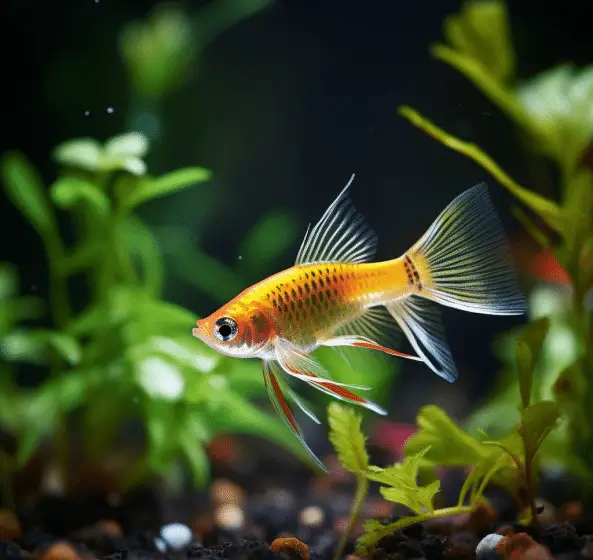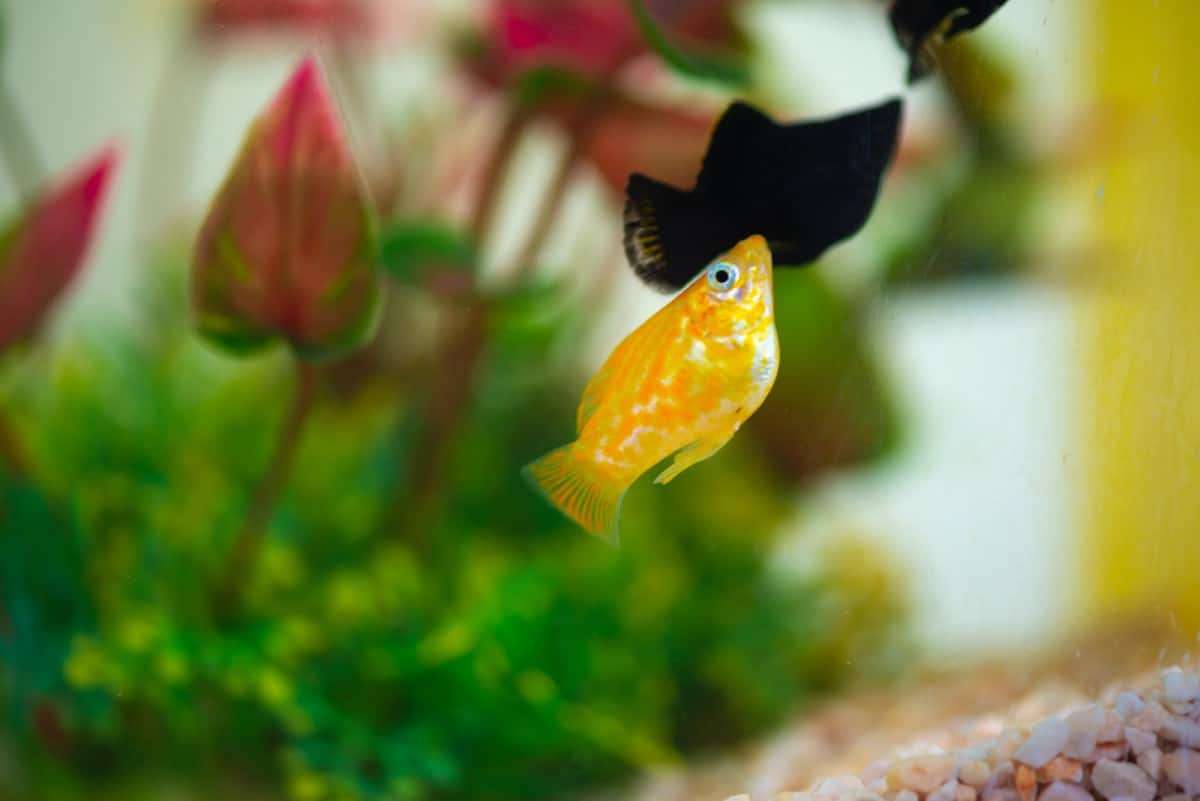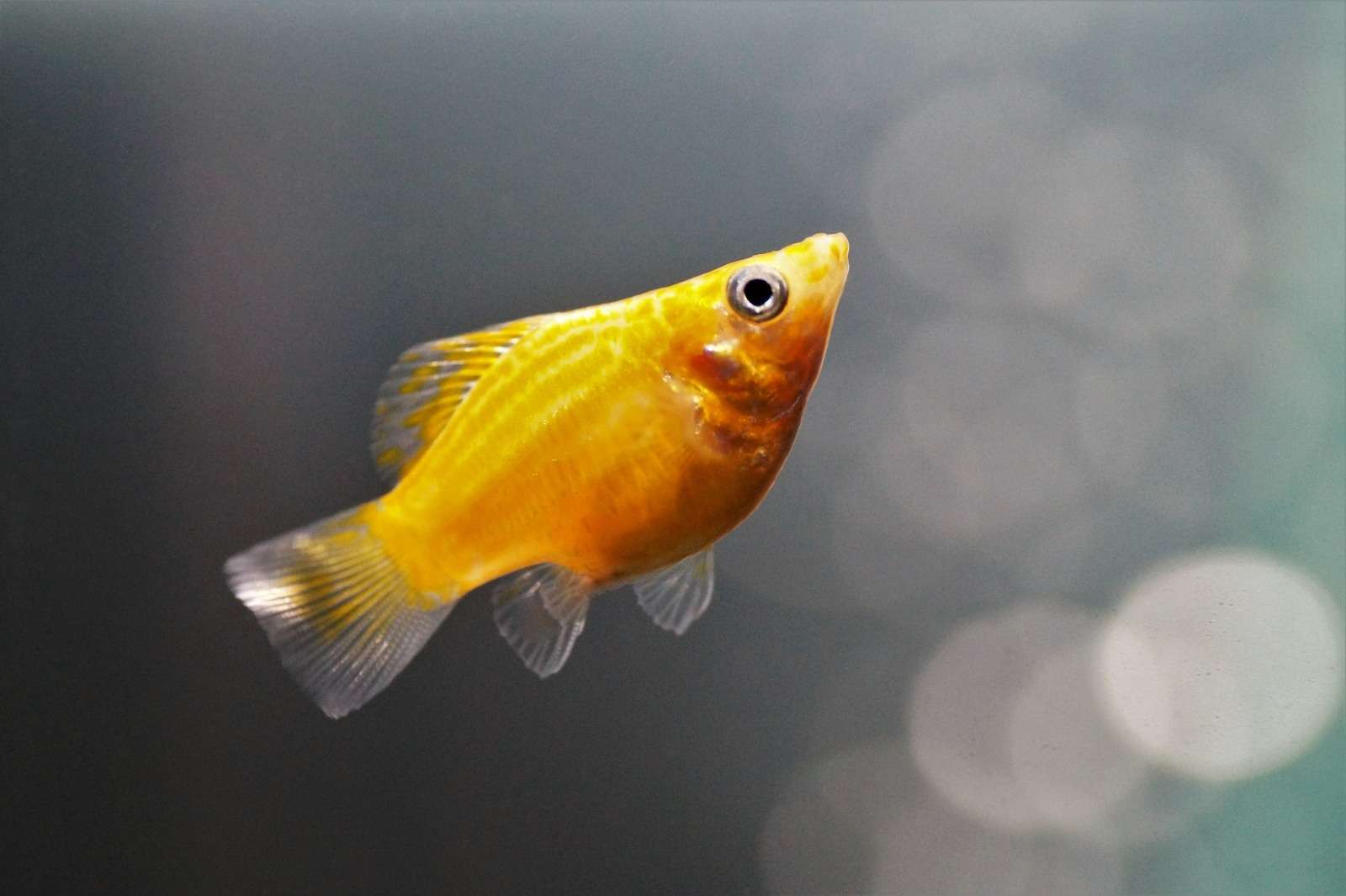Are Molly Fish Aggressive

Introduction
Are Molly Fish Aggressive: Aquarium aficionados love molly fish for their vivid colors and attractive personality. Poecilia sphenops and velifera, or molly fish, are quiet and friendly communal fish. Their energetic and gregarious behavior makes them great community aquarium additions. The colors and patterns of these little freshwater fish make any aquarium look good.
Molly fish are peaceful, but like any living creature, their behavior can vary depending on tank size, water parameters, and other fish species. Mollies are less aggressive in larger tanks with hiding areas and appropriate tankmates. In overcrowded or underequipped tanks, they may act territorially or aggressively, especially during mating or pregnancy.
We will explore molly fish aggression, including their typical behavior, the elements that cause it, and how to have a peaceful aquarium with these attractive aquatic friends.

Are common molly aggressive?
Mollies are generally peaceful fish, but males can be slightly aggressive when they want to mate with females. Researchers have found that males with large dorsal fins dominate the tank, as females find this feature attractive.
Common mollies, also known as Poecilia sphenops, are generally not considered aggressive fish. In fact, they are known for their peaceful and friendly nature, making them popular choices for community aquariums. These small, vibrant fish come in a variety of colors and patterns, adding aesthetic appeal to aquatic environments.
The temperament of common mollies can be influenced by several factors, including tank size, water parameters, and the presence of other fish species. In larger tanks with suitable hiding places and compatible tankmates, common mollies typically exhibit minimal aggression. They are more likely to thrive in a well-maintained aquarium with ideal water conditions and a balanced diet.
One aspect to consider is that mollies, like many fish, may show heightened territorial or aggressive behavior during mating and pregnancy periods. To maintain a harmonious aquarium environment with common mollies, it’s advisable to provide ample space and hiding spots and ensure proper care.
By meeting their specific requirements, aquarists can enjoy the company of these captivating fish without significant issues related to aggression. Common mollies are generally known for their peaceful coexistence with other fish, making them an excellent addition to any community tank.
Are mollies peaceful?
Generally speaking, mollies are peaceful fish. However, they are very active and often nibble on things to see if they are edible. Therefore, slow-moving, long-finned fish may not be the best tank mates for them.
Freshwater mollies are peaceful. Aquarium aficionados love Poecilia sphenops and Poecilia velifera for their pleasant nature and vivid beauty.
Mollies’ placid demeanor makes them ideal for community tanks with other fish. Social, they interact with their tankmates and liven up the aquarium.
Male mollies may pursue females more aggressively during mating and pregnancy. Providing ample hiding locations and allowing females to flee can reduce hostility during such periods.
Tank conditions and water quality affect mollies’ calmness, along with their relationships with other fish. Maintaining a large aquarium with consistent water parameters and feeding these fish well creates a peaceful environment.
For aquarists seeking tranquil, community-oriented fish, mollies can thrive and enhance the aquarium with proper care and tank management.
Can mollies hurt each other?
Mollies sometimes chase and attack other mollies while feeding but they will not cause that much harm. However if you have a tank too small and the fish getting bullied is not getting any food at all -> It might die from stress and sickness.
Mollies, in general, are not known for being aggressive or causing harm to each other intentionally. They are considered peaceful fish and are often kept in community aquariums without issues. However, there are some circumstances in which mollies might engage in behaviors that could potentially harm one another.
These encounters are normally harmless, but if the female is not receptive or the tank has a male-to-female ratio imbalance, they can cause stress or mild injury.
To reduce the risk of damage during mating and courtship, females need hiding locations and places to retreat and take breaks from relentless males. An even male-to-female ratio can also reduce aggressive mating.
In congested tanks with few supplies, mollies may become territorial and aggressive. Mollies are not destructive to each other, but careful aquarium management and understanding their behavior during certain periods can help foster a pleasant molly community tank.
How do you know if your fish is aggressive?
An aggressive fish will attach itself to your aquarium or a section of your aquarium shortly after being introduced to its new home. It will subsequently defend this piece of territory against all encroachers.
Determining if your fish is displaying aggression can be crucial in maintaining a harmonious aquarium environment. There are several observable signs and behaviors that can help you identify if a fish in your tank is being aggressive:
- Chasing and Nipping: Aggressive fish may chase and nip at other tankmates. This behavior is often a display of dominance or territoriality.
- Fin Damage: Frequent aggression can lead to torn or damaged fins in the victim fish. Look for any visible signs of physical harm.
- Territorial Behavior: Some fish are territorial and may fiercely defend a specific area of the tank. If a fish consistently guards a spot, it could be a sign of aggression.
- Bullying: Aggressive fish might single out one or more tankmates for relentless harassment. This can lead to stress and physical harm to the targeted fish.
- Exclusion from Food: Aggressive fish may prevent others from accessing food. Observe if certain fish are consistently denied access to food during feeding time.
- Puffing or Flaring: Some fish species, like bettas, exhibit aggressive behaviors by puffing up or flaring their fins and gill covers to intimidate rivals.
- Increased Stress: Aggressive interactions often result in increased stress levels among tankmates. Look for signs of stressed fish, such as rapid gill movement, hiding, or reduced feeding.
- Breeding Aggression: During mating and courtship, some fish, like cichlids, may exhibit aggression. Males might chase females relentlessly.
How many mollies should be kept together?
How many molly fish should I have? As with many livebearers, mollies love to breed, so we recommend getting at least two to three females for every male. This ratio allows the girls to get a break from the boys’ constant attention.
The number of mollies that should be kept together in an aquarium or fish tank depends on several factors, including the size of the tank, water parameters, and the social behavior of the mollies. Mollies are social fish, and they tend to thrive in groups. A good rule of thumb is to keep at least three to five mollies together, as this helps reduce stress and promotes a more natural social dynamic. However, the tank’s size plays a crucial role in determining the appropriate number. For smaller tanks, it’s best to limit the number of mollies to avoid overcrowding and maintain water quality.
Keeping too many of them together without proper planning can lead to an overpopulation issue. If you want to control their population, consider keeping a single-sex group or adding some natural predators to the tank, such as certain types of catfish.
Ultimately, the ideal number of mollies to keep together depends on the specific tank conditions and your goals as an aquarist, whether you aim to create a thriving community or maintain a controlled population. Regular monitoring of water quality and tank dynamics is essential to ensure the well-being of your mollies.
Why is my Molly chasing other fish?
Males are more dominant and do bully around others. If they are the only two as well, they will definitely chase each other. If its a male and female, the chasing is a result of breeding likely.
Mollies are generally peaceful community fish, but certain factors may lead to them becoming more aggressive or territorial.
- Mating Behavior: One of the most common reasons for Molly fish chasing is mating behavior. Male Mollies can be quite persistent in pursuing females for mating. This can lead to chasing as the males try to court the females. If you have a disproportionate gender ratio in your tank, with too many males, this behavior can be more pronounced.
- Territorial Disputes: Mollies can also establish territories within the aquarium. Chasing can occur when one Molly is encroaching on another’s territory, especially if there are limited hiding spots or if the tank is overcrowded.
- Stress: High-stress levels in the aquarium can lead to increased aggression among fish, including Mollies. Factors like poor water quality, inadequate hiding spots, or the presence of aggressive tankmates can contribute to stress.
To address this behavior, consider providing plenty of hiding places and maintaining good water quality. If you suspect a gender imbalance, consider adjusting the male-female ratio in your tank. Monitoring and addressing stressors can help reduce Molly chasing and create a more harmonious environment for your fish.
Can tank size affect molly fish aggression?
Tank size can significantly impact the aggression levels of Molly fish, a popular freshwater aquarium species. Molly fish, like many other fish species, are influenced by their living conditions, and the size of their tank plays a crucial role in determining their behavior.
In smaller tanks, Molly fish may exhibit higher levels of aggression due to restricted space. Limited room to establish territories or avoid confrontations can lead to increased stress and territorial disputes. Overcrowding in a small tank can intensify competition for resources, such as hiding spots or access to food, further contributing to heightened aggression.
Conversely, larger tanks provide more swimming space and the opportunity for fish to establish their territories with less interference from other individuals. This can lead to a more peaceful coexistence among Molly fish, as they have room to roam and find their own space.
The size of the tank in which Molly fish are kept can significantly affect their aggression levels. Providing an adequately sized tank not only promotes a more harmonious and less aggressive environment but also contributes to the overall health and well-being of these colorful and lively aquarium inhabitants.
Can environmental factors influence molly fish aggression?
Environmental factors can indeed influence the aggression levels of Molly fish, popular freshwater aquarium inhabitants. These factors encompass a range of variables, including water quality, tank size, social dynamics, and habitat complexity.
Water parameters such as temperature, pH levels, and hardness can affect Molly fish behavior. An environment with stable and appropriate water conditions typically results in less stress and aggression. Sudden changes in water chemistry or extreme values can provoke stress, leading to heightened aggression.
Tank size is another crucial factor. Overcrowding in a small tank can create territorial disputes and increase aggressive interactions among Molly fish. Providing enough space and hiding spots can reduce such conflicts.
The presence of other tankmates also plays a role. Certain fish species may coexist peacefully with Molly fish, while others may trigger aggression due to competition for resources or incompatible behaviors.
Habitat complexity, in terms of plants, rocks, and decorations, can provide hiding spots and break lines of sight, reducing confrontations and aggression.
Maintaining stable water conditions, providing an adequately sized tank, selecting compatible tankmates, and creating a well-structured habitat can all contribute to a more peaceful and less aggressive environment for Molly fish in the aquarium.

Conclusion
The question of whether molly fish are aggressive can be addressed with a degree of nuance. These colorful and sociable freshwater fish are generally known for their peaceful nature, making them a favorite choice for aquarium enthusiasts. However, as with any fish species, their behavior can be influenced by various factors, such as tank conditions and the presence of other tankmates.
The key takeaway is that, under optimal conditions, mollies are unlikely to display aggressive behavior. A spacious aquarium with appropriate hiding spots and compatible tankmates can help maintain a harmonious environment for these charming fish. It is essential to note that aggression in mollies often becomes more prominent during mating and pregnancy periods. Adequate space and hiding places can mitigate these occasional bursts of aggression.
Additionally, understanding the specific needs of mollies, such as water quality and proper nutrition, can contribute to their overall well-being and reduce the likelihood of aggressive tendencies. Aquarium hobbyists can enjoy the delightful presence of molly fish tanks, appreciating not only their vivid colors but also their peaceful and friendly disposition. Overall, mollies are a great choice for community tanks when given the right care and environment.



